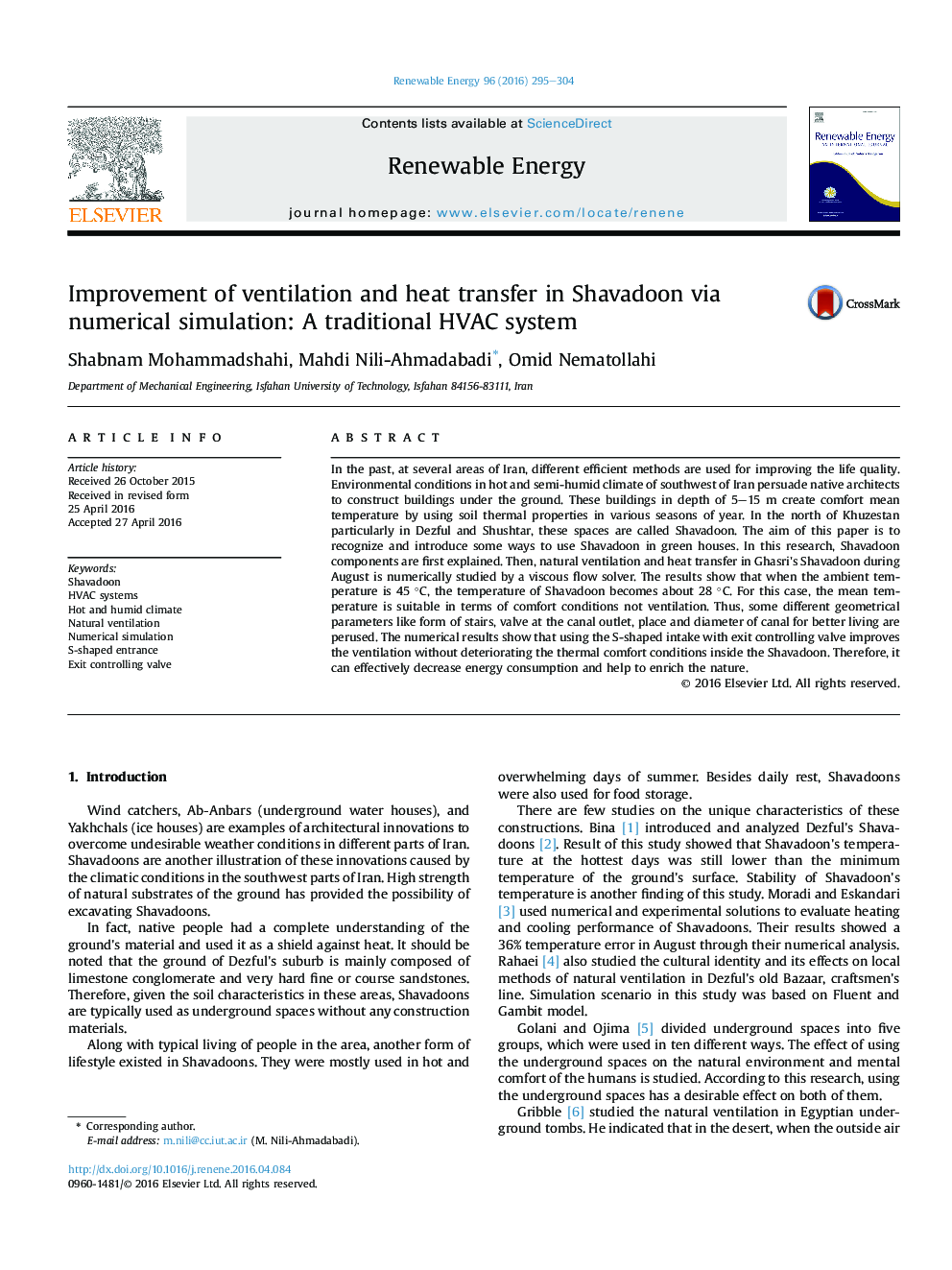| Article ID | Journal | Published Year | Pages | File Type |
|---|---|---|---|---|
| 10293874 | Renewable Energy | 2016 | 10 Pages |
Abstract
In the past, at several areas of Iran, different efficient methods are used for improving the life quality. Environmental conditions in hot and semi-humid climate of southwest of Iran persuade native architects to construct buildings under the ground. These buildings in depth of 5-15 m create comfort mean temperature by using soil thermal properties in various seasons of year. In the north of Khuzestan particularly in Dezful and Shushtar, these spaces are called Shavadoon. The aim of this paper is to recognize and introduce some ways to use Shavadoon in green houses. In this research, Shavadoon components are first explained. Then, natural ventilation and heat transfer in Ghasri's Shavadoon during August is numerically studied by a viscous flow solver. The results show that when the ambient temperature is 45 °C, the temperature of Shavadoon becomes about 28 °C. For this case, the mean temperature is suitable in terms of comfort conditions not ventilation. Thus, some different geometrical parameters like form of stairs, valve at the canal outlet, place and diameter of canal for better living are perused. The numerical results show that using the S-shaped intake with exit controlling valve improves the ventilation without deteriorating the thermal comfort conditions inside the Shavadoon. Therefore, it can effectively decrease energy consumption and help to enrich the nature.
Related Topics
Physical Sciences and Engineering
Energy
Renewable Energy, Sustainability and the Environment
Authors
Shabnam Mohammadshahi, Mahdi Nili-Ahmadabadi, Omid Nematollahi,
